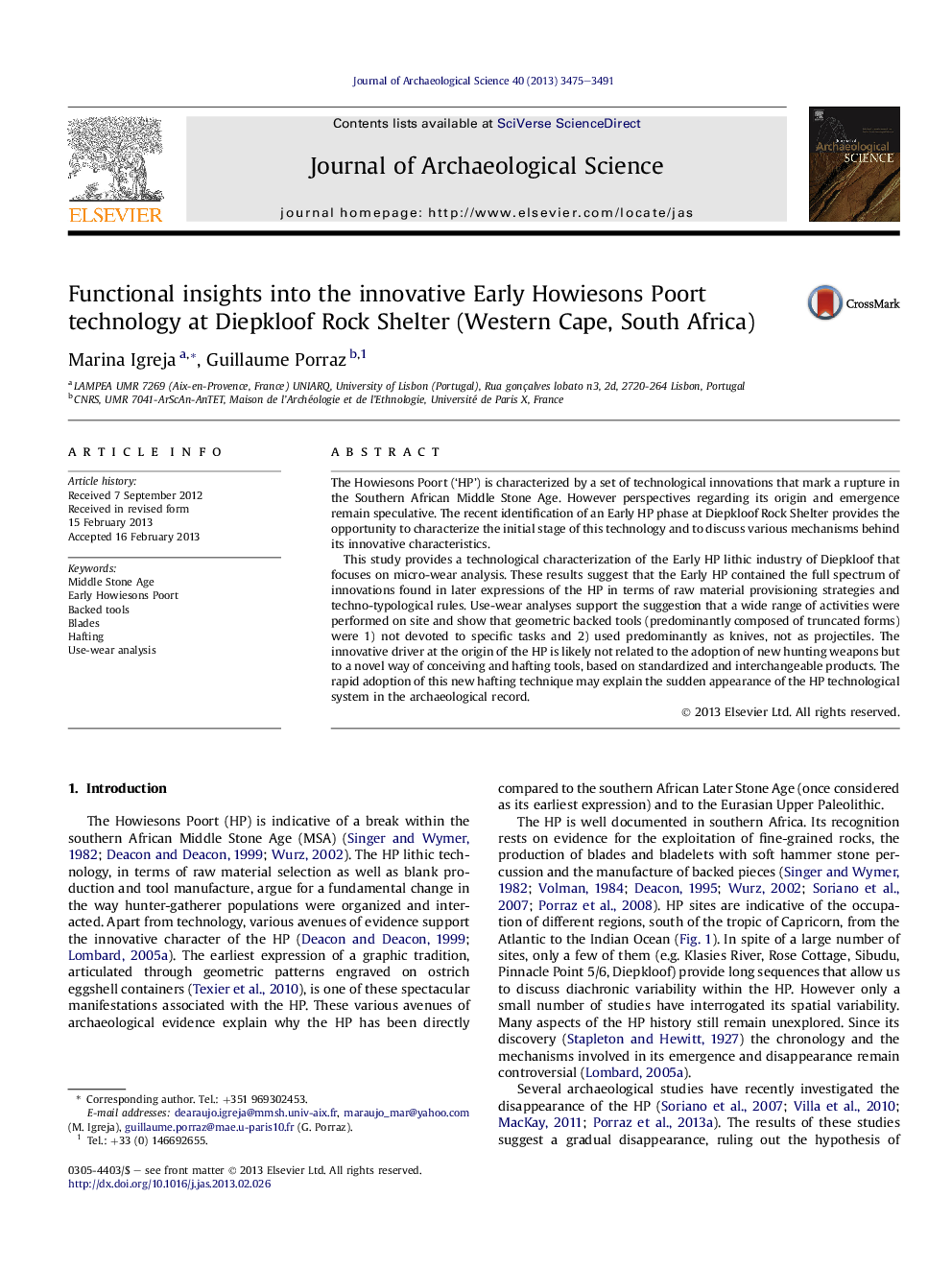| Article ID | Journal | Published Year | Pages | File Type |
|---|---|---|---|---|
| 1035430 | Journal of Archaeological Science | 2013 | 17 Pages |
The Howiesons Poort (‘HP’) is characterized by a set of technological innovations that mark a rupture in the Southern African Middle Stone Age. However perspectives regarding its origin and emergence remain speculative. The recent identification of an Early HP phase at Diepkloof Rock Shelter provides the opportunity to characterize the initial stage of this technology and to discuss various mechanisms behind its innovative characteristics.This study provides a technological characterization of the Early HP lithic industry of Diepkloof that focuses on micro-wear analysis. These results suggest that the Early HP contained the full spectrum of innovations found in later expressions of the HP in terms of raw material provisioning strategies and techno-typological rules. Use-wear analyses support the suggestion that a wide range of activities were performed on site and show that geometric backed tools (predominantly composed of truncated forms) were 1) not devoted to specific tasks and 2) used predominantly as knives, not as projectiles. The innovative driver at the origin of the HP is likely not related to the adoption of new hunting weapons but to a novel way of conceiving and hafting tools, based on standardized and interchangeable products. The rapid adoption of this new hafting technique may explain the sudden appearance of the HP technological system in the archaeological record.
► Diepkloof documents an Early HP phase. ► The HP package appeared abruptly. ► The Early HP backed pieces were primarily used as domestic tools. ► The innovativeness of the HP technology is likely to be related to the way people hafted and conceive their tools.
